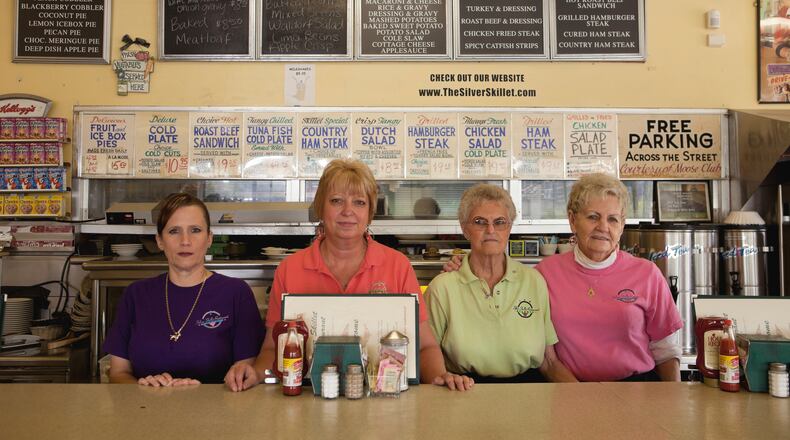The 1996 Olympics were coming to Atlanta and every major institution in the city wanted to prove it was the embodiment of the New South. The High Museum was no exception.
“Picturing the South,” was to be the High’s signature exhibition, a group show of photographs of the region, depicting where the South had come from. Except, apart from images from its own collection, which was established in the 1970s and had photos dating from the 1840s forward, the High had to borrow many images for the show. As rapper André 3000 famously declared just a year before the Olympics, the South did indeed have something to say. The High just needed contemporary photographers to show how it had changed.
So, the museum started a new grant initiative called “Picturing the South” and commissioned three photographers — Sally Mann, Dawoud Bey and Alex Webb — to depict 1990s life in Atlanta and the rest of the state.
Now, 25 years and hundreds of photographs later, “Picturing the South” has become a signature project of the museum that continues to document the Southern experience across the region. Much of the work is now part of the High’s permanent collection and is the focus of “Picturing the South: 25 Years,” a retrospective exhibition that opens Nov. 5.
Credit: Sally Mann
Credit: Sally Mann
Credit: Jim Goldberg
Credit: Jim Goldberg
The show of about 265 images features the work of 16 photographers and includes new commissions by An-My Lê, Sheila Pree Bright and Jim Goldberg. The only mandate was that the photos be taken in the South. Past that, each artist was free to create what they wanted.
Gregory Harris, the High’s curator of photography, talks about the exhibition and what the images say about this place we call home.
Q: Initially, the work had to be done in Georgia. When did it expand to the region?
A: In 1998. We don’t have a really hard definition of what the South is, but generally speaking, south of the Mason-Dixon line and westward to Texas. But that question of what is the South and how artists conceive the South is one of the ongoing questions that comes up. Every photographer takes a different direction.
Credit: Shane Lavalette
Credit: Shane Lavalette
Q: Were most of the photos taken in the Deep South?
A: A lot of them have been made in Georgia, Louisiana, Mississippi, Alabama and the Carolinas. A couple of photographers shot in Texas, a little bit in Florida, Tennessee and one of the newest commissions by Jim Goldberg was shot entirely in Arkansas.
Q: What narrative emerges from all of those photos and how the South has changed in 25 years?
A: Like the South itself, there’s no one defining narrative. A lot of different stories converge and overlap, but a number of themes came up. There’s concern with the landscape, particularly with the environment and the ways humans and industry have had an impact on the land and have changed the land, often in a fairly detrimental way. There’s an interest in culture. For example, Shane Lavalette’s commission is about music. To capture the spirit of music and how place shapes the music that comes out of it and how music shapes our understanding of that place. One of the biggest themes is photographers grappling with the very complicated history of the South, particularly around race. Looking at those legacies of slavery and the Jim Crow South and how that continues to form the way people relate to one another, the structures and conditions they live in and the cultural expressions they create.
Credit: Partially funded by The High Museum of Art, Atlanta
Credit: Partially funded by The High Museum of Art, Atlanta
Q: Are there stereotypes about the South in the work?
A: A lot of (the photographers) are trying to challenge stereotypes rather than playing into the same old clichés of how the South is represented. They are trying to say it’s more complicated than that.
Q: So did the work challenge your ideas of what the South is?
A: I grew up in New England and moved here from Chicago five years ago. I’ve never really spent time in the South before coming to work at the High. But this sense of how varied the South is and how the landscape has so many different textures and how nuanced interpersonal relations are, that comes through in the pictures. The South is an often maligned and criticized place. In some ways, that comes from a lot of truth that has existed here, but it’s just one part of such a layered story. Seeing how the photographers have all tried to work in and around that has been fascinating.
Credit: Richard Misrach
Credit: Richard Misrach
Q: You said participation in this project has changed the trajectory of some of the artists’ work for the long term. How so?
A: One of the earliest ones is Sally Mann. She’d been photographing her children on the farm in Virginia, which is what made her a household name. She’d been dabbling a bit in photographing the landscape but hadn’t really committed to that. But with the commission, she really dove in head first and also with experimenting with alternative photographic processes. She’s been working with experimental processes and photographing primarily the landscape ever since. She talks about that in her memoir; getting the commission and that being a transitional moment for her. Richard Misrach is another great example. He had photographed primarily in the West, mostly desert. When he got the commission, he spent an entire year photographing up and down the Mississippi River between Baton Rouge and New Orleans (”Cancer Alley”) looking at the petrochemical processing industry and the impact it had on the land and the people who lived there. It became a major book. A more recent one is Sheila Pree Bright. For the last five years she’s been photographing Black Lives Matter, making incredible work with that. But she wanted a different way to talk about the Black experience. When I talked with her, she was like, I really want to explore land in the South and the significance land has to Black people in the South. She’s gotten such incredible results, that she can keep going.
Credit: Alex Webb
Credit: Alex Webb
Q: As viewers walk through this show, what’s essential for them to realize about photography in the South?
A: The South, it’s not often thought of as this crucial place in history for American art, and yet photography in the South is vital to the story of American photography going back to the Civil War. The Civil War was the first conflict that was ever photographed. Then images of the Great Depression, the civil rights movement, these are crucial things that have happened right here. So one of the things we’re trying to do with this show is to really emphasize the important role the South has in inspiring artists to tell stories about not just the region, but about the country as a whole. So much of what has become American culture and politics has been hashed out here. I think that comes through in test pictures.
The interview has been edited for clarity and length.
Participating photographers
Kael Alford
Dawoud Bey
Sheila Pree Bright
Debbie Fleming Caffery
Jim Goldberg
Emmet Gowin
Alex Harris
Shane Lavalette
An-My Lê
Sally Mann
Richard Misrach
Abelardo Morell
Martin Parr
Alec Soth
Mark Steinmetz
Alex Webb
ART PREVIEW
“Picturing the South: 25 Years.” Nov. 5-Feb. 6. $16.50. High Museum of Art, 1280 Peachtree St. NE, Atlanta. 404-733-4400, high.org.
About the Author
Keep Reading
The Latest
Featured









